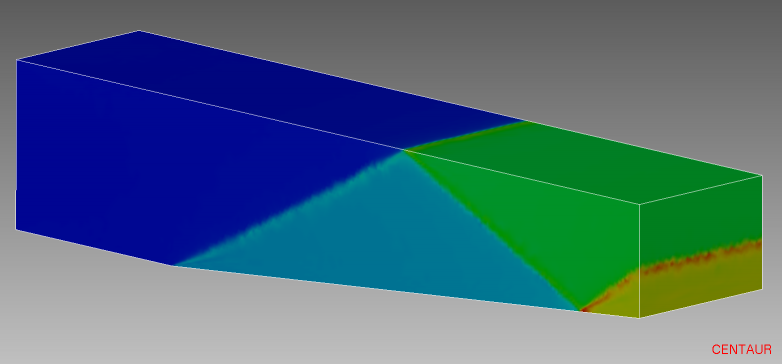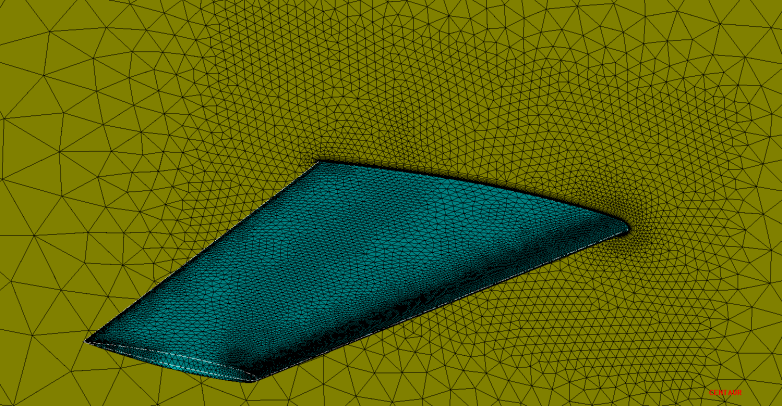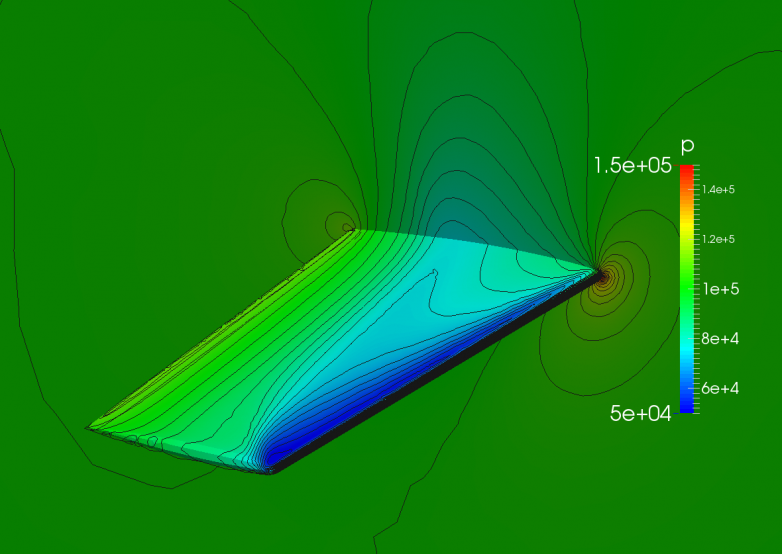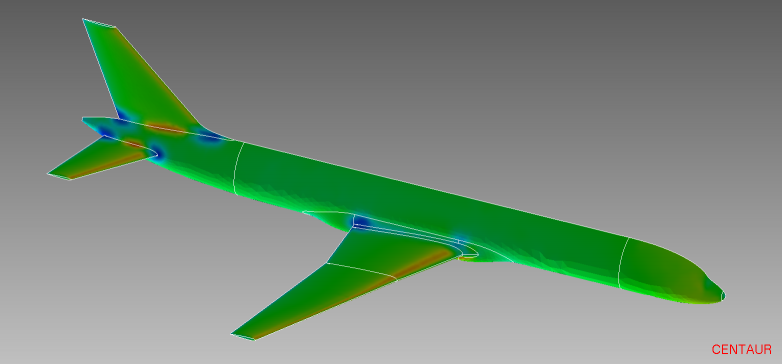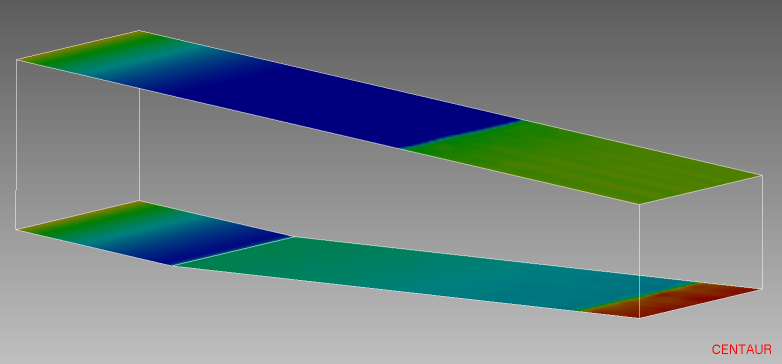Regeneration
An initial solution obtained from a coarse mesh is employed to produce a corrected mesh automatically. The new grid “follows” the emerging field better via sensors – guided adaptation. The same variety of sensors used for the refinement – coarsening can be applied here. A smooth element size variation is enforced.
Supersonic Duct - Pressure Based Regeneration
This test case represents a simple supersonic duct with a 5° ramp on the lower surface. In order to capture the reflected shocks, the pressure gradients and pressure differences along edges were used to determine where additional resolution should be added.
The new mesh has much better clustering where the shock is located and a very smooth size variation away from the shock. The shock was resolved more accurately compared to the solution computed on the original mesh.
M6 Wing - Pressure Based Regeneration
The transonic flow over an ONERA M6 wing was modeled at M=0.84, α=3.04° using OpenFOAM. The original mesh was able to weakly capture the standing forked shock on the upper wing surface. The pressure data from this initial run was used as input to the regeneration process.
The new mesh has additional clustering where the shock was detected to better resolve the feature. Simulations using the new mesh reveal a much better resolved shock as indicated in the pictures below.
Aircraft - y⁺ Regeneration
The automatic regeneration lowers the excessively high y+ values on the aircraft surface. A near constant y+ value is achieved at all surface nodes of the regenerated mesh.
Supersonic Duct - y⁺ Regeneration
The automatic regeneration lowers the excessively high y+ values on the upper and lower surfaces of a supersonic duct. The initial mesh produced y+ values around 100,000 which is much higher than the desired y+ value of 1000. After regenerating the mesh, the final y+ values are constant and lowered to near the goal.




